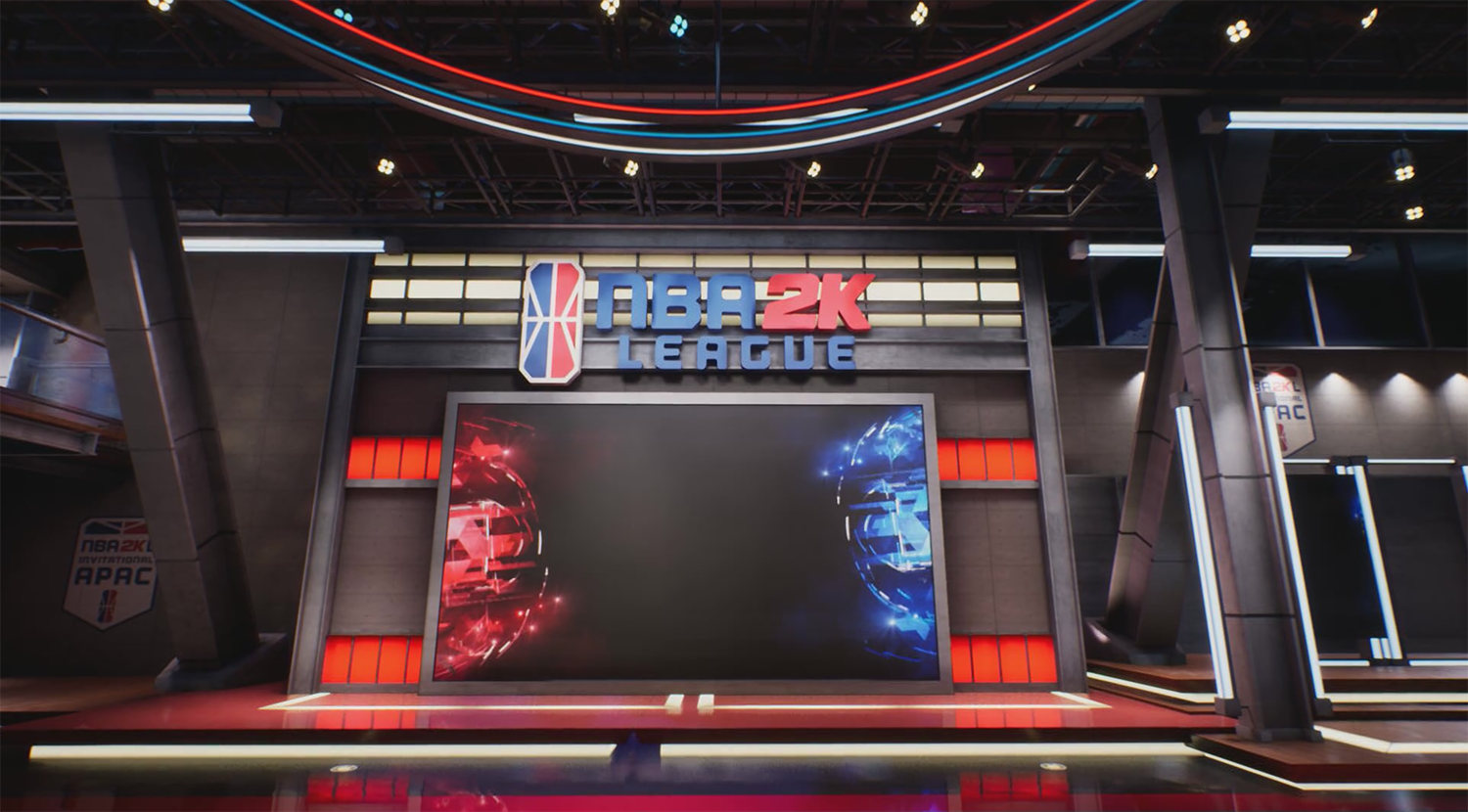NBA 2K League Deploys Multi-Site Production, Virtual Studio for APAC Invitational
The esports production used two control rooms: one in Seoul, the other in NYC.
Story Highlights
Earlier this month, the NBA 2K League headed to Seoul, South Korea, for the 2020 NBA 2K League APAC Invitational. In an effort to produce the event efficiently without sacrificing production quality, the NBA 2K League production team opted to deploy a multi-site workflow that featured two control rooms nearly 7,000 miles apart, in Seoul and New York City. While the competition itself was produced onsite at Seoul’s Nexon Arena, NBA 2K League’s on-air talent were in New York City inside a virtual studio casting live over the game feed.
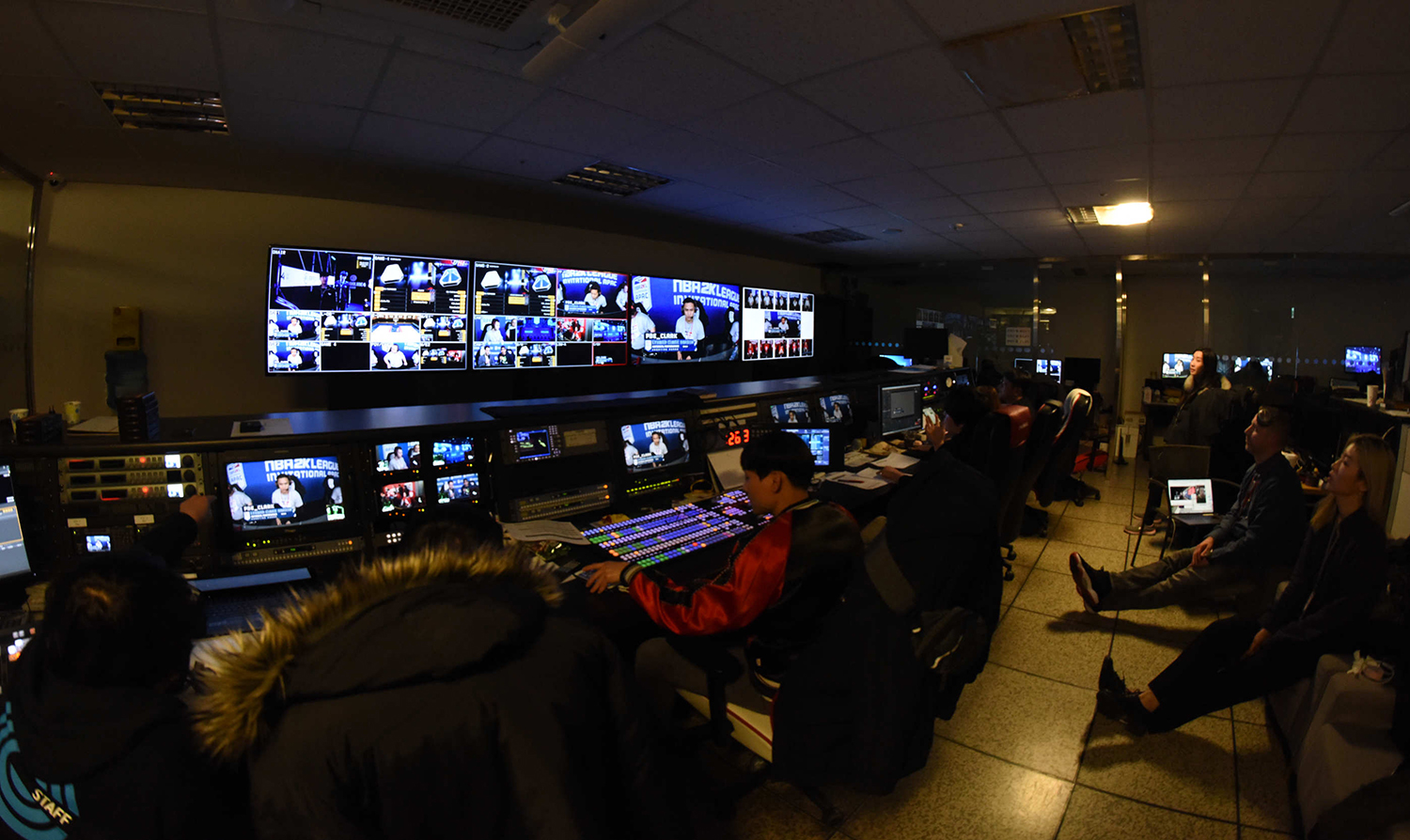
The onsite control room at Nexon Arena in Seoul was one of two production facilities used for the NBA 2K League APAC Invitational.
“This is a really unique production because we decided to create two completely separate but interlocking workflows,” says Matt Arden, head of content and media, NBA 2K League. “Believe it or not, we planned it all out in about a week and pulled it off without a hitch.”
A Production Tale of Two Cities
Held Jan. 20-21, the APAC Invitational was the league’s second international qualifying event in the Asia-Pacific region and identified elite players from the region who will become eligible for the 2020 NBA 2K League Draft. Arden and company had originally planned to send casters/hosts and a production team to Seoul to produce the event onsite. However, facing sizable travel costs and a significant language barrier — the majority of the Nexon Arena crew do not speak English — Arden began exploring other options.
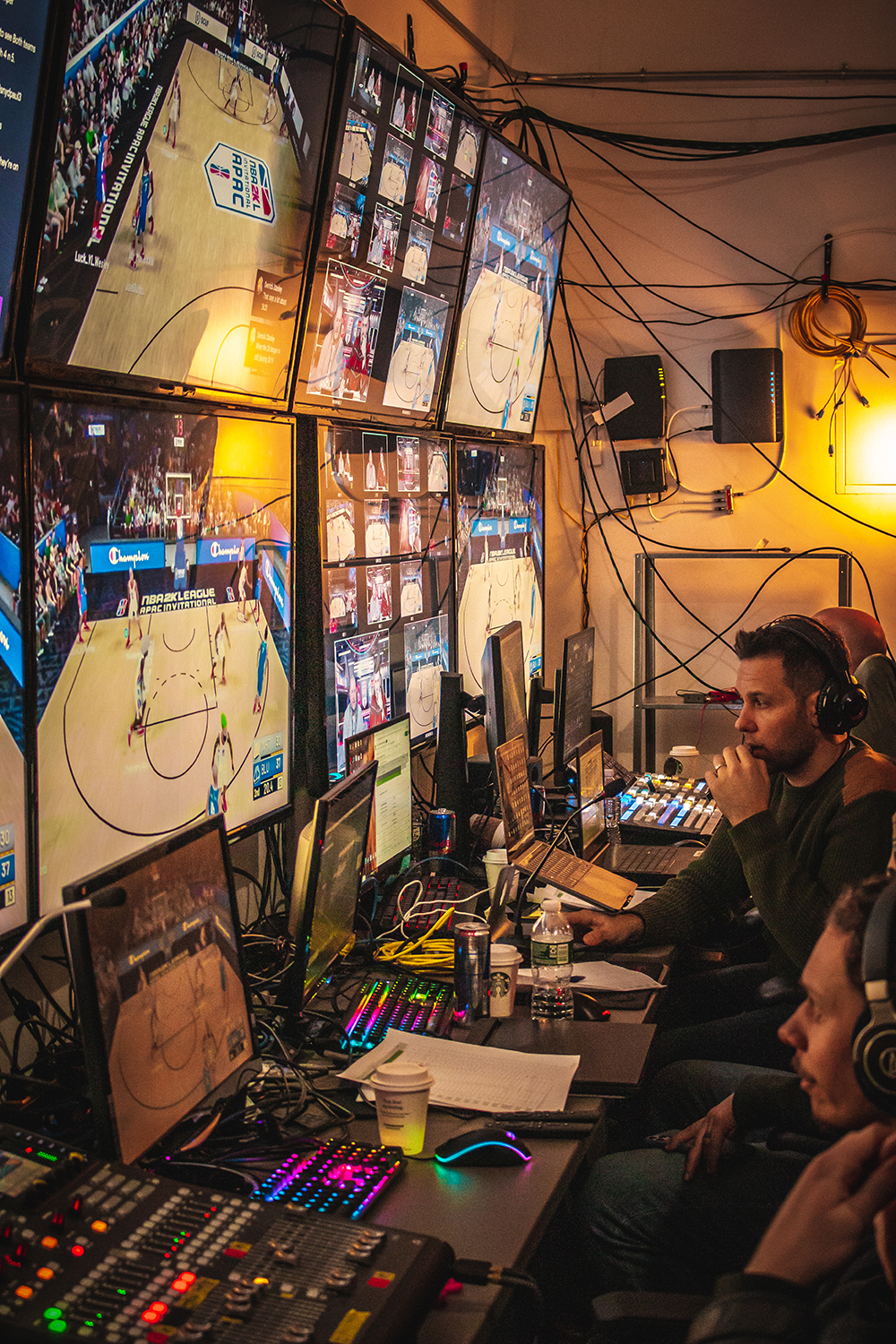
The control room at OS Studios in NYC handled the host/studio side of the NBA 2K League APAC Invitational production.
“We realized quickly that we would also have to budget for translators,” he says. “And they would have to be translators that not only spoke both languages but also spoke ‘live production’ [and] can translate in near real time when we’re moving very quickly in the control room. That’s just not feasible. And then add in the fact the [Nexon Arena production team] is amazing at what they do and really wanted the opportunity to produce this event. Korea is the de facto home of esports, and they wanted to show the level of production that they were capable of.”
With that in mind, Arden and company began developing a workflow that would allow the primary NBA 2K League production team to remain in New York while the Nexon Arena team handled the production in Seoul.
In the end, the main competition was produced out of an onsite control room in Seoul staffed by the Nexon Arena crew with Arden producing and directing via a translator. A dirty feed (featuring lower-third and player-ID graphics but no commentary) was sent as an RTMP stream to OS Studios (located at the OS NYC gaming and content lounge in Manhattan). The league enlisted LiveCGI to create an NBA 2K League-branded virtual studio at OS NYC, where casters Scott Cole and Mike LaBelle hosted live studio segments and called the game action.
“One of the big issues we faced was that nobody in New York was familiar with players competing at the APC tournament, so we had Chinese- and Korean-speaking production people helping us ID them in real time in Seoul. We sent that quasi-dirty feed to New York, where they overlaid studio and host content on top of that feed.”
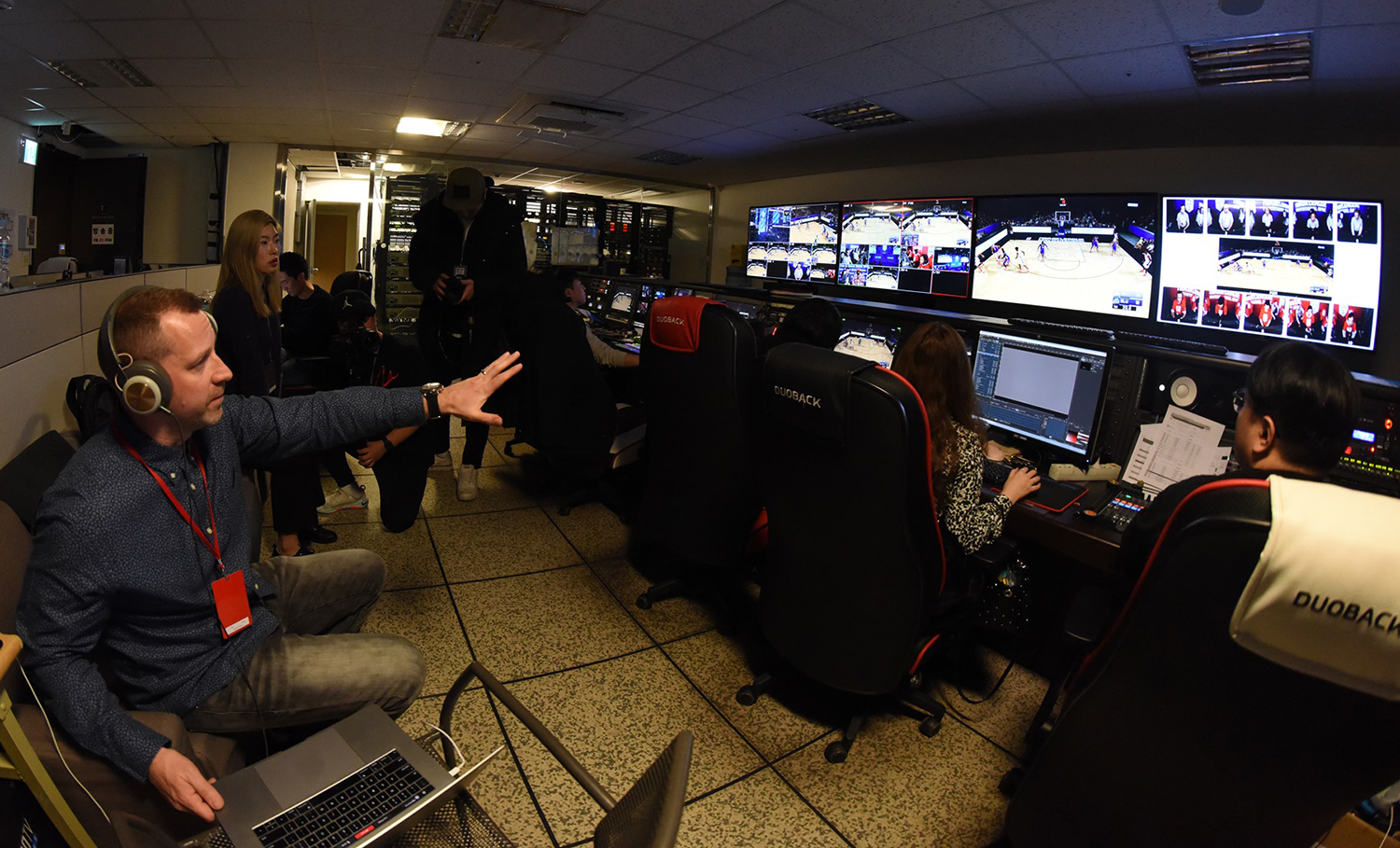
NBA 2K League’s Matt Arden was onsite in Seoul, producing and directing the game feed with the aid of a translator.
The Final was live-streamed on the NBA 2K League’s Twitch and YouTube channels and in China on Tencent.
Arden coordinated transitions with NBA 2K League Content and Programming Management Lead Mike Budney, who was at the front bench in New York. Dealing with roughly 30 seconds of latency between the event in Seoul and the operation in New York, the two communicated key moves and transitions via Facetime.
“I controlled the show from Korea, and New York took leads from me,” says Arden. “When we would [transition] to New York, I would tell Mike on FaceTime ‘we’re killing our stream now, so you’re on live in 30.’ And then if New York wanted to talk to Korea, I would just give them a game-mark time on the scoreboard since I was in the future. [The latency] actually gave New York about 30 seconds to prepare for anything that was coming down the stream, so it ended up being helpful.”
In NYC: NBA 2K League Gets Virtual With LiveCGI at OS Studios
OS Studios provided the bulk of the production crew and its broadcast studio, which features a NewTek VMC1 media-production system, four BirdDog Eyes P200 PTZ cameras, and a Behringer X32 digital audio mixer.
LiveCGI provided the virtual-studio system in which the talent was located, integrating the software with the studio’s cameras and backend infrastructure.
“The opportunity to create virtual studios is incredibly exciting to us,” says Arden, “especially since we’re a bit of a transient league and we travel a good amount. The opportunity to test the boundaries of this virtual experience has been really fun. And OS Studios and LiveCGI were very easy to work with, especially considering the complicating international-origination factor.”
Although the technology was not used for this production, LiveCGI also offers an optional motion-capture body suit that allows creation of digital avatars of on-air talent.
“We’re definitely interested in the technology LiveCGI provides,” notes Arden. “We could potentially create avatars of our [on-air talent], and they could have done the show from their living rooms. I think it’s exciting and interesting, and, as a cutting-edge league, we want to experiment with this technology.”
Moving Forward: More At-Home Production, Virtual Studios
According to Arden, the league’s outside-the-box production experiment was a success, and the at-home-production workflows and virtual-studio/AR technologies developed for the APAC Invitational are expected to be used more in the future.
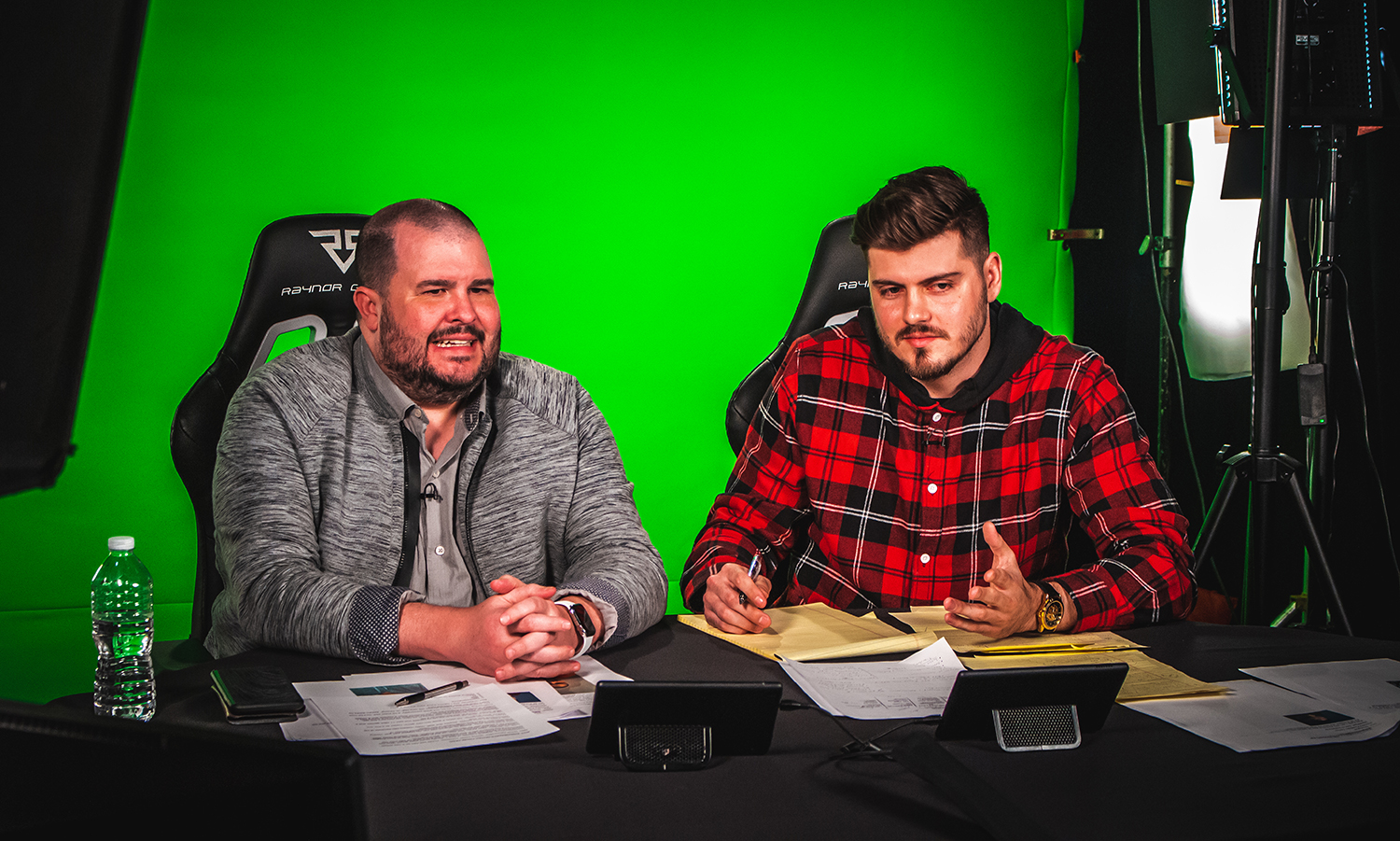
Scott Cole (left) and Mike LaBelle hosted live studio segments and called the NBA 2K League action taking place in Seoul from a virtual studio in NYC.
“We wanted to use this as an opportunity to experiment,” he explains, “and we wanted to test ourselves to see what was possible. We walked away feeling very confident about what we achieved there, both as a league and as a broadcast entity. Moving forward, there are two things that we’re excited about. First, this [workflow] allows us a lot more flexibility for these travel events — from both a technology perspective and a budget perspective. Second, it also has unlocked the opportunity for creating studio shows and studio content without the burden of building physical sets. We can constantly create new opportunities in this virtual space, which also provides more flexibility in terms of budget and time for our facilities.”
Check out the full recap of the NBA 2K League APAC Invitational below:
We traveled to South Korea and what we found was more 2K talent! 🌏
Take an in-depth look back at the recent NBA 2K League APAC Invitational #2KLAPAC pic.twitter.com/fFbWW9BV9W
— NBA 2K League (@NBA2KLeague) January 30, 2020
